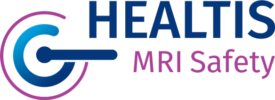Using our Technical and regulatory expertise to help you navigate MRI safety from strategy to submission ...
HEALTIS is a leader in evaluating the safety of medical devices introduced in the MRI environment. Our experts participate in the development of new knowledge and the development of standards in the field of MRI safety and compatibility of medical devices. This allows us to be at the forefront of knowledge in the evaluation of interactions between MRI and medical devices but also to anticipate changes.
Through contact with our customers, we have also acquired expertise in the regulatory requirements for the marketing of medical devices across international markets.
This makes HEALTIS the ideal companion to maximize your chances of having an irreproachable assessment of the MRI safety of your medical devices. This accompaniment by an expert is offered from the first contacts with HEALTIS. If your project requires it, we will be able to offer you technical and regulatory assistance services. These benefits may take the following forms:
- Proposed Risk Assessment Strategy
- Determination of the worst-case
- Writing Rationals
- Interpretation of results and marking of the device according to ASTM F2503
- Audit of your risk assessment in MRI and proofreading of documents
We also support some customers in the design of DM compatible with an IRM environment -> see R&D support
Proposed MRI Risk Assessment Strategy
There are more than a dozen potential interactions between the electromagnetic waves of the MRI and any product introduced into the examination room (forces, overheating, dysfunctions, vibrations, artifacts, …). A relevant MRI safety risk analysis begins with a good risk analysis, the realization of which requires a lot of knowledge: the device and its clinical use, the physical phenomena involved, the regulatory aspects, the test methods, etc.
Each risk chosen must then be evaluated appropriately: rational writing or conducting tests on a worst-case scenario.
We propose to support you in this step of strategic definition of your project of evaluation of the risk in MRI, so that your study is most relevant.
Assistance in determining worst-case
The determination of the worstcases for the tests can prove to be complex, in particular for the devices with multiple configurations (different sizes, materials, design, clinical situations, …). In MRI, this worstcase will not necessarily be the same depending on the phenomenon studied.
We propose to assist you in this step, by providing expertise that can implement digital modeling if necessary.
Writing rationale
It is sometimes wise to evaluate a level of risk by a scientific argument. As experts in the physics of MRI, we propose to accompany you for the writing of these arguments.
Interpretation of results and device marking according to ASTM F2503 and FDA Guide “Testing and Labeling Medical Devices for Safety in the Magnetic Resonance (MR) Environment”
Our tests measure the level of an interaction, the force of displacement for example, but what about the risk incurred by the patient and the information given to clinicians?
Our interpretation of the results and the marking of the device consists in producing a report that you can use in your regulatory files. This will reflect the chosen evaluation strategy, the justification of the worst-cases, the resumption of test results and other rationale, the interpretation of these results and a proposal for marking the device according to ASTM F2503 (MR Safe / MR Unsafe / MR Conditional), and the FDA Guidance “Testing and Labeling Medical Devices for Safety in the Magnetic Resonance (MR) Environment”.
Audit of your risk assessment in MRI and proofreading of documents
Our expertise allows us to have a critical eye on your study of the MRI safety of medical devices. At your request we will be able to carry out any proofreading of documents in view of the standards in force and the state of knowledge in the security in MRI.
Why should I perform MRI Testing?
Medical devices, when introduced into the electromagnetic environment of MRI, can interact with these electromagnetic fields and these interactions can pose a risk to the patient. Furthermore, it is possible that the EM fields of the MRI environment disrupt the proper functioning of a medical device, and a given malfunction of the device could become a danger to the patient. It is thus imperative to conduct MRI testing for any medical device that may enter an MR imaging environment.
Do I need to perform MRI Testing? / Is MRI safety and compatibility testing necessary?
In short, yes. Most notified bodies (including the FDA) and the EU Medical Device Regulations (MDR) require that medical device manufacturers assess the risks associated with MRI scanners to ensure patient safety in the MRI environment, thus MRI testing is necessary.
Do all medical devices need to be tested for MRI Compatibility?
If a medical device is known to enter (or has a possibility to enter) the MRI environment, its MRI compatibility should be assessed. This can include both active and passive medical devices, fully implanted, semi or partially implanted medical devices, non-implanted external medical devices and even medical equipment that may be used in the MRI environment. While common medical devices may come to mind: pacemakers, cardiac stents, external fixation devices, catheters, etc. even items such as wound-care products, medical gowns with RFID tags, oxygen bottles and single-use ventilators (to name but a few) can require testing.
What Regulatory standards exist for MRI Testing?
There are several regulatory standards in place for the testing of MRI safety and compatibility. MRI testing for passive medical devices is typically performed in accordance with the ASTM standards: F2052, F2213, F2182, F2119 and MRI labeling is conducted according to ASTM F2503. MRI testing for active medical devices is typically performed according to the ISO/TS 10974 document with additional normative requirements for some implants (AAMI CI86 for cochlear implants, AAMI PC76 for pacemakers and ICDs, ..,).
There also exists two FDA guidance documents which can be useful: “Testing and Labeling Medical Devices for Safety in the Magnetic Resonance (MR) Environment” and “Assessment of Radiofrequency-Induced Heating in the Magnetic Resonance (MR) Environment for Multi-Configuration Passive Medical Devices”.
I tested my devices years ago, are my tests still valid?
The regulatory standards for MRI testing are constantly evolving. In fact, Healtis actively participates in the normative groups that advance the ASTM and ISO standards that are relevant to MRI testing as experts in the field.
If you have tested your device according to an outdated edition of a standard, you will at the very least need to update the test report so that it complies with the current regulatory standards, and in some cases may need to re-evaluate the safety of your device. This will depend on the specifics of your device and previous testing. The current editions of the ASTM and ISO standards are listed below for you to reference:
- ASTM F2052- 21
- ASTM F2213-17
- ASTM F2182- 19e2
- ASTM F2119-24
- ASTM F2503-23e1
- ISO/TS 10974:2018
What kind of MRI label can I expect for my device?
It is a common misconception that a medical device that may enter the MRI environment is ‘MR Safe’. This is incorrect. MRI labeling has 3 possible outcomes, “MR Safe”, “MR Conditional”, and “MR Unsafe” according to ASTM F2503.
In order to be labeled “MR Safe” a device must possess no safety hazards in the MR environment. This is effectively restricted to devices containing no metallic, magnetic, or conductive components. Therefore most medical devices ultimately should aim for a “MR Conditional” label, where the specific conditions for which a patient can safely be scanned in a MR environment are outlined.

